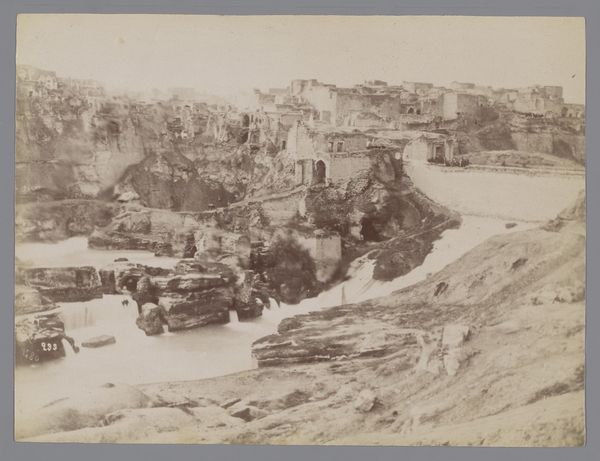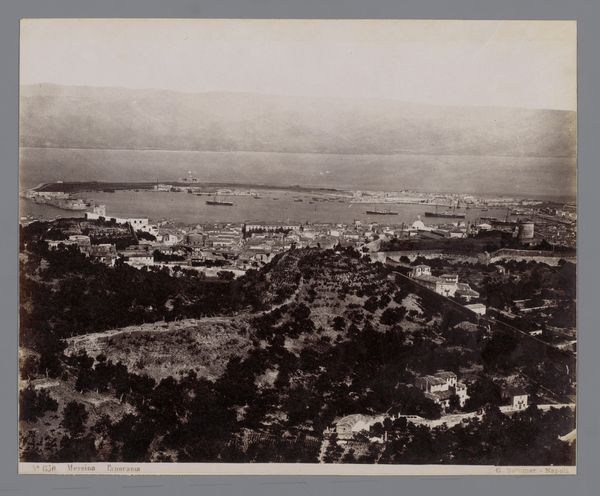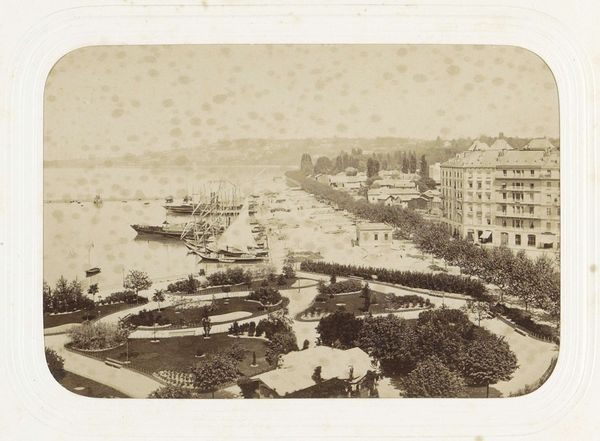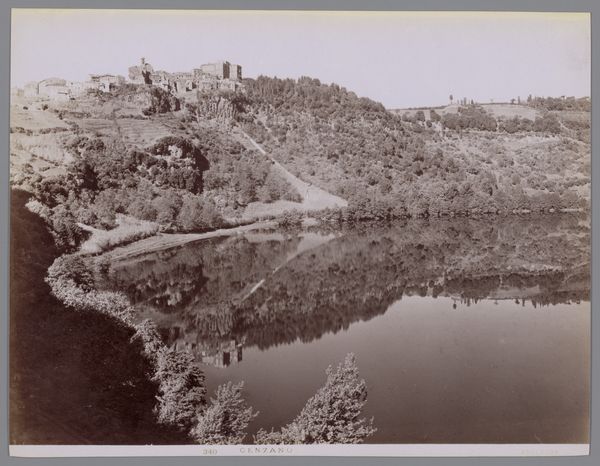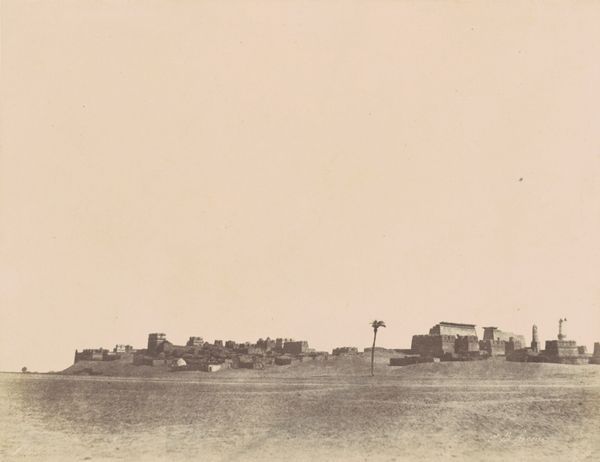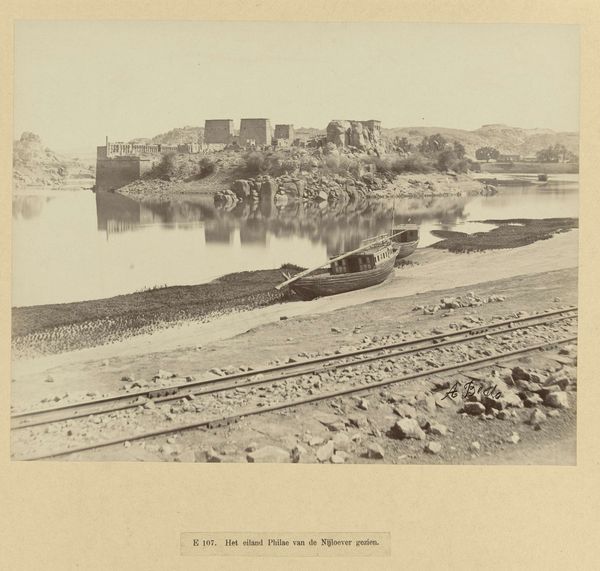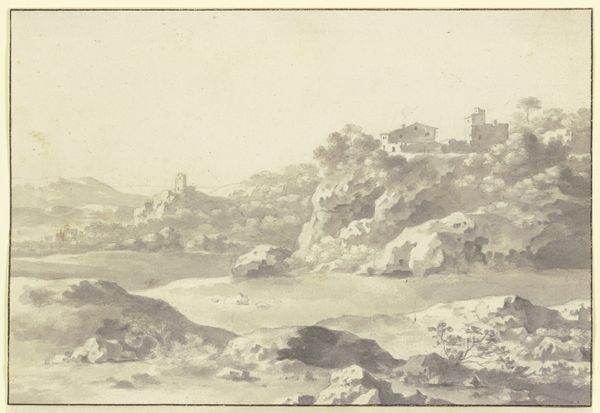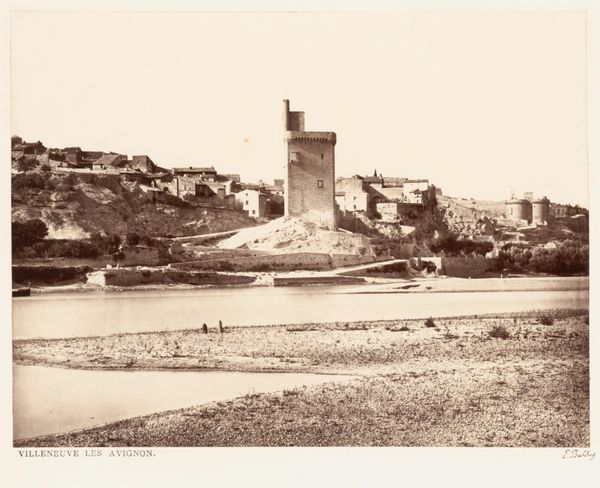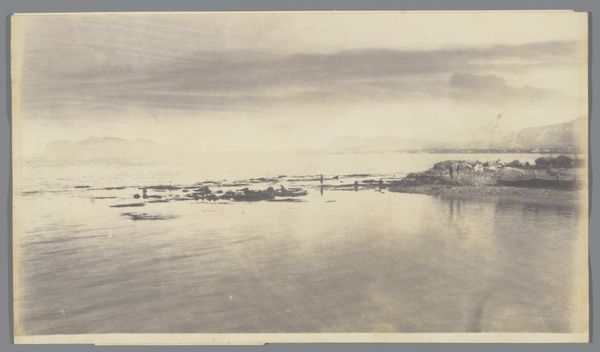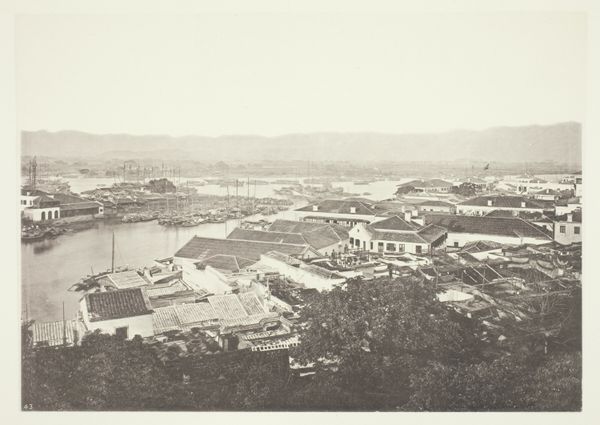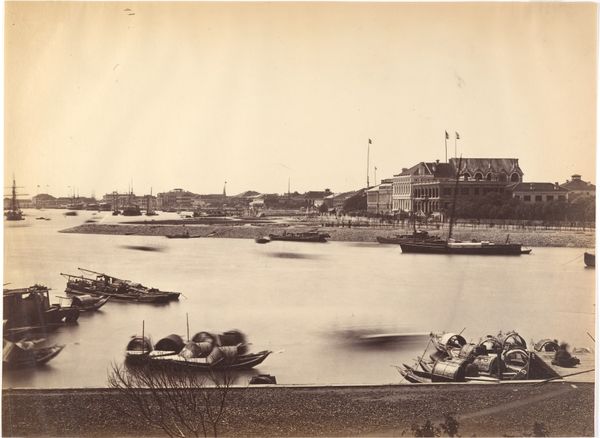
Ile de Fîleh (Philæ), Vue Générale Prise du Sud-Est au Point B 1851 - 1852
0:00
0:00
daguerreotype, photography
#
landscape
#
daguerreotype
#
ancient-egyptian-art
#
outdoor photography
#
photography
#
ancient-mediterranean
Dimensions: 24.2 x 30.5 cm. (9 1/2 x 12 in.)
Copyright: Public Domain
Félix Teynard made this photograph of the island of Philae in Egypt using the Calotype process. This early photographic technique, developed in the 1840s, involved coating paper with silver iodide to create a negative. The hazy quality comes from the paper's texture, which softens the image compared to sharper, more detailed processes like the daguerreotype. What's fascinating is how this technological development intersects with the rise of tourism and archaeological interest in Egypt during the 19th century. Teynard, as a trained civil engineer, brought a unique perspective to this artistic medium. The Calotype's relative ease of reproduction allowed for wider distribution of images, fueling popular fascination with ancient sites. This connects to broader issues of colonialism, labor, and the commodification of culture. The very act of capturing and disseminating these images was part of a larger project of Western engagement with, and control over, the ancient world. So, considering materials and processes, we can unpack the social and political context embedded in this seemingly straightforward photograph.
Comments
No comments
Be the first to comment and join the conversation on the ultimate creative platform.

